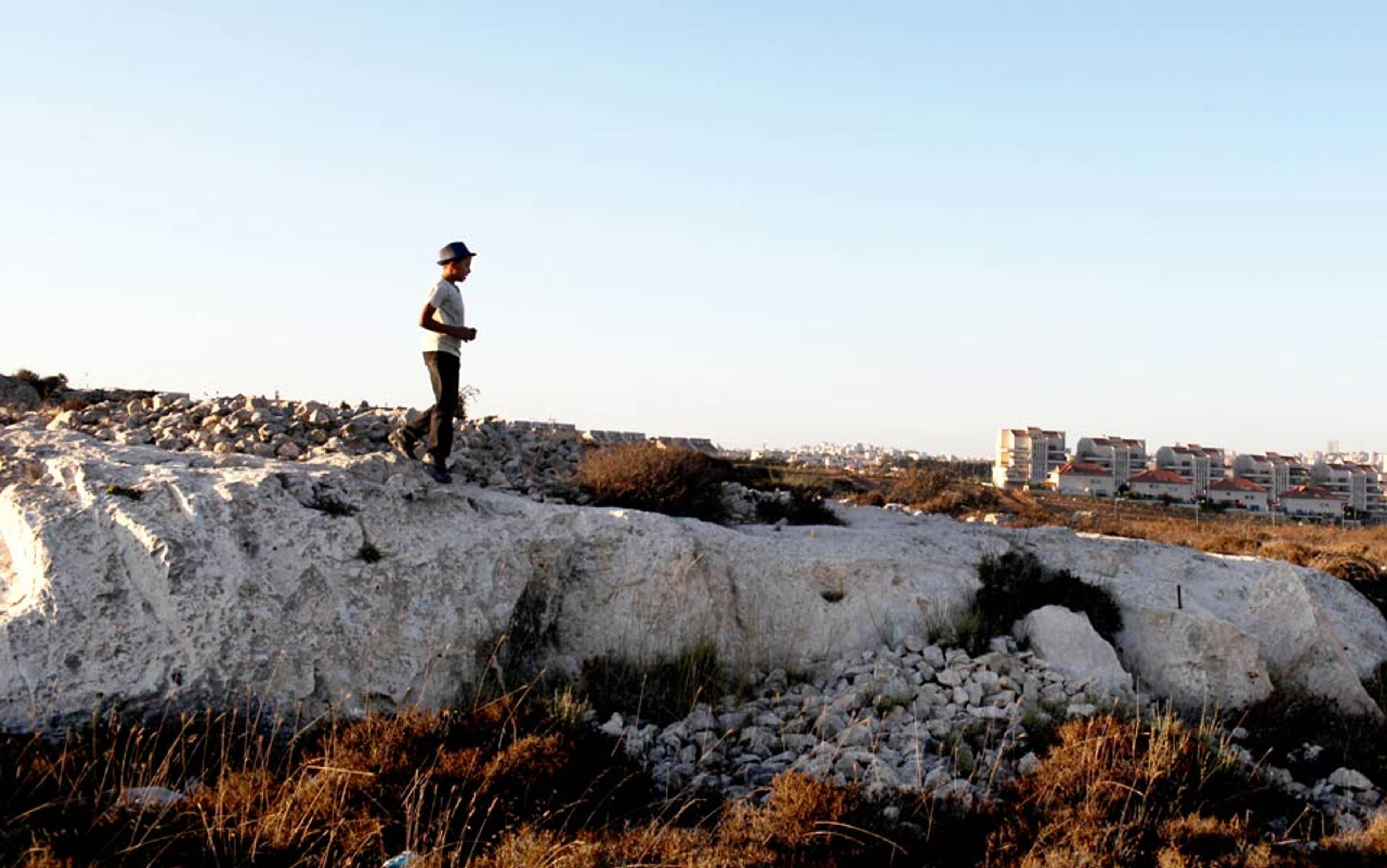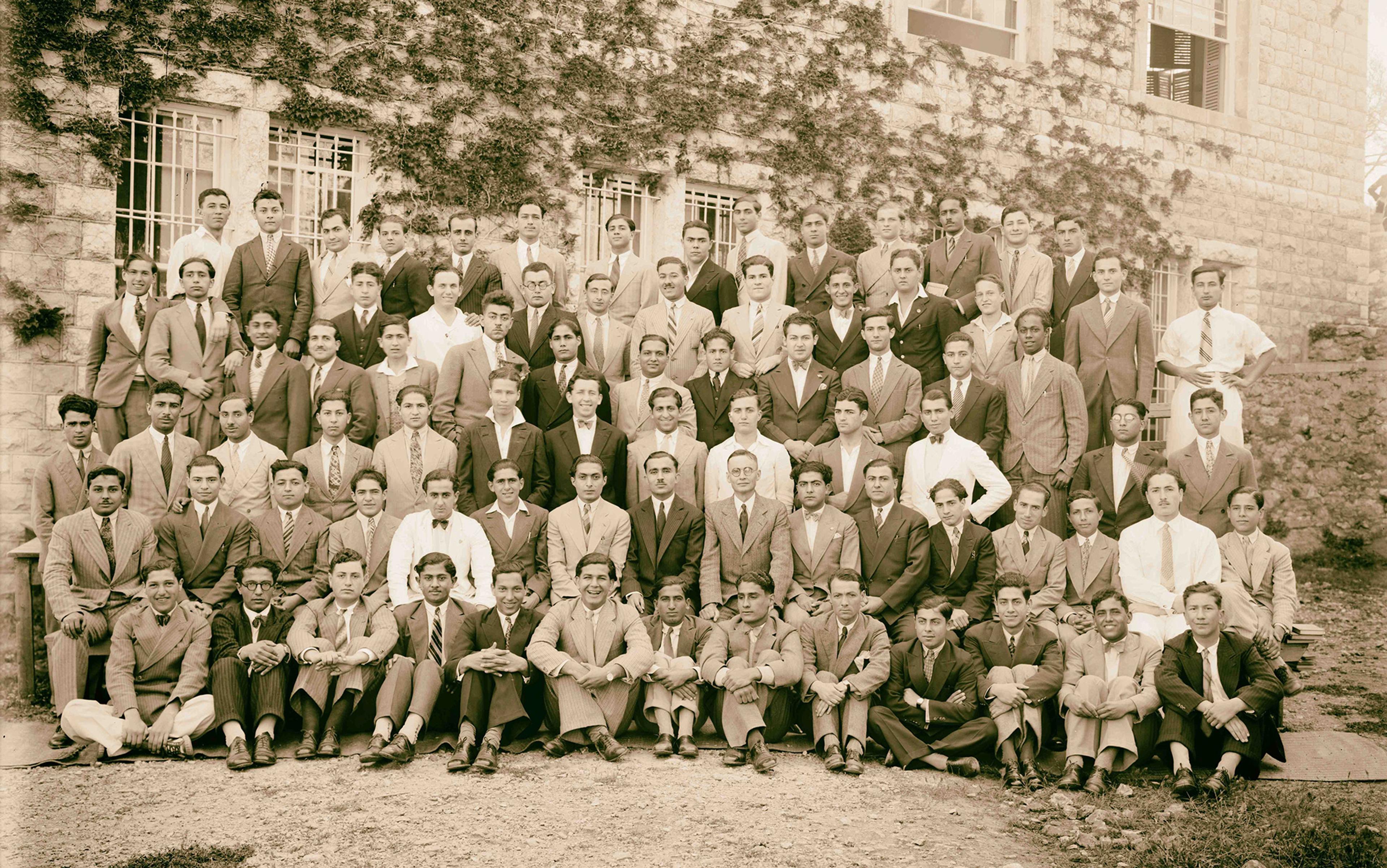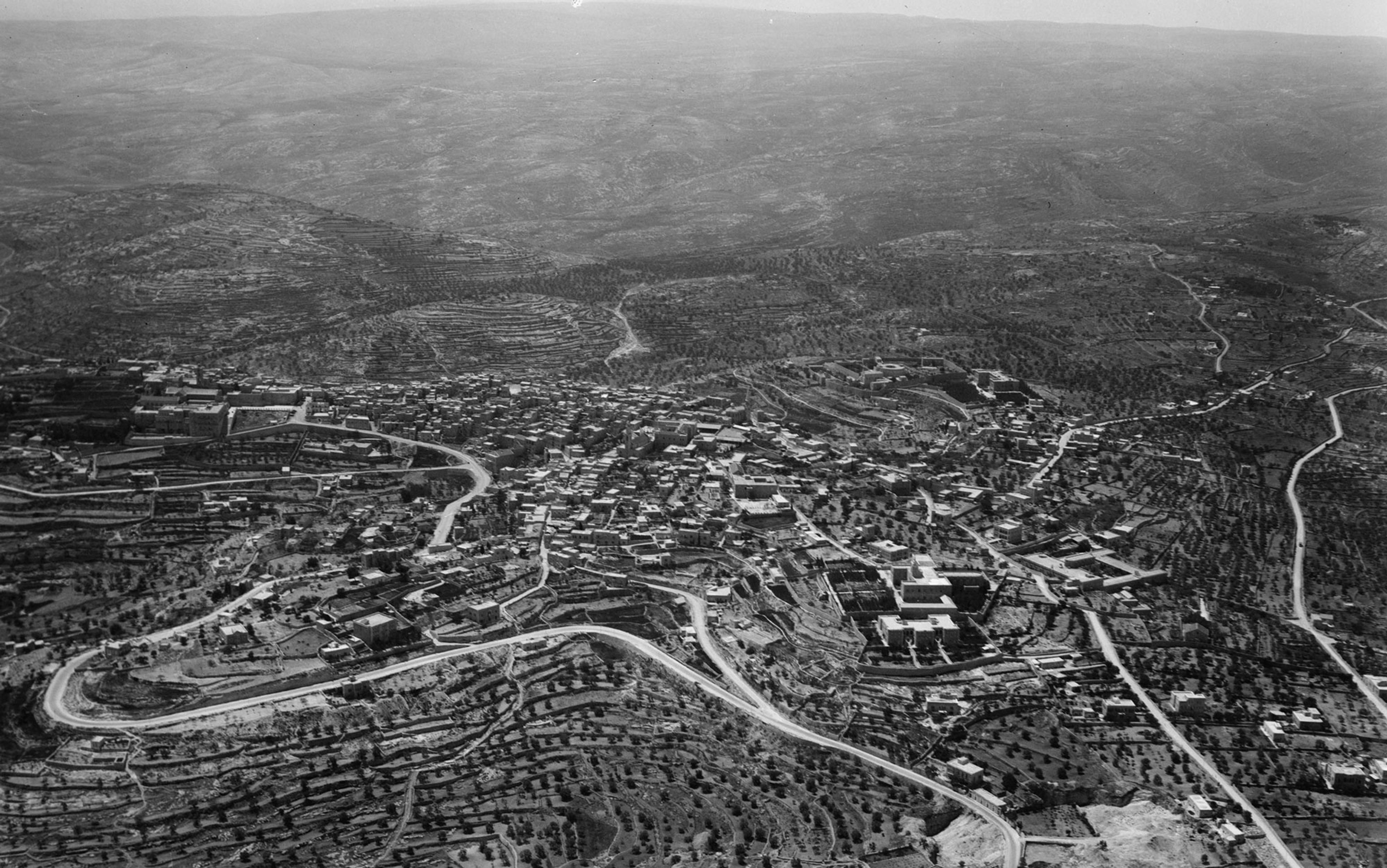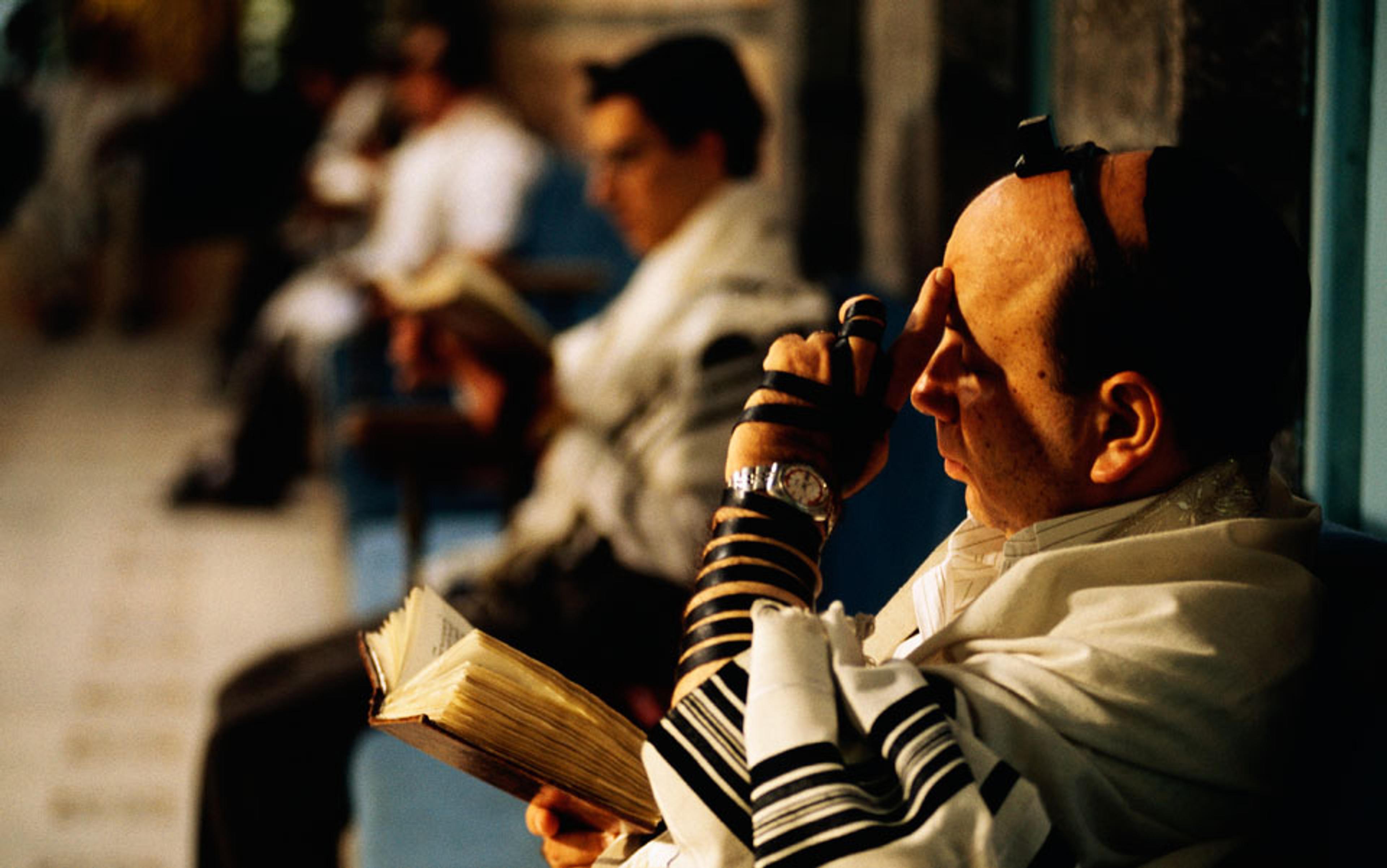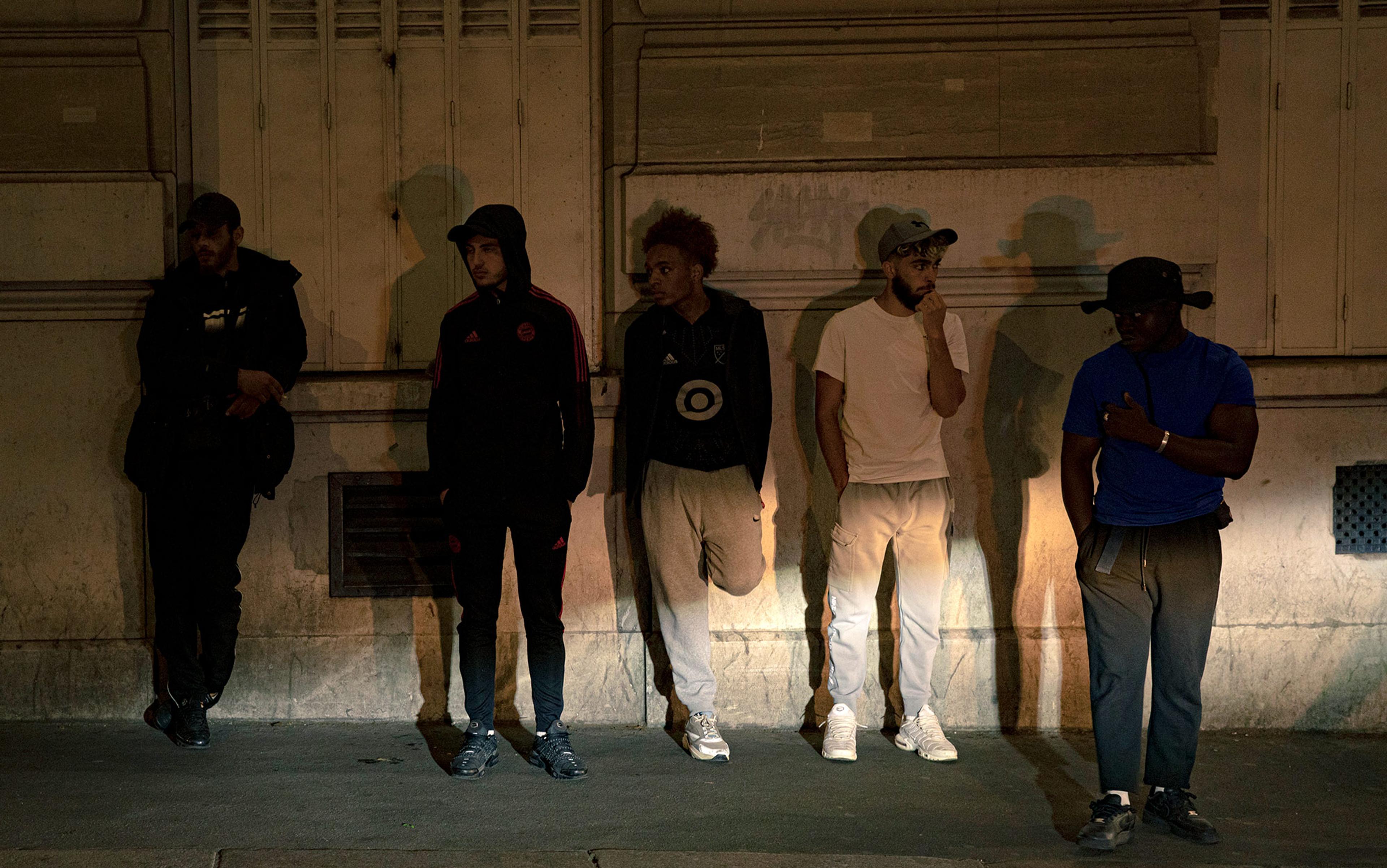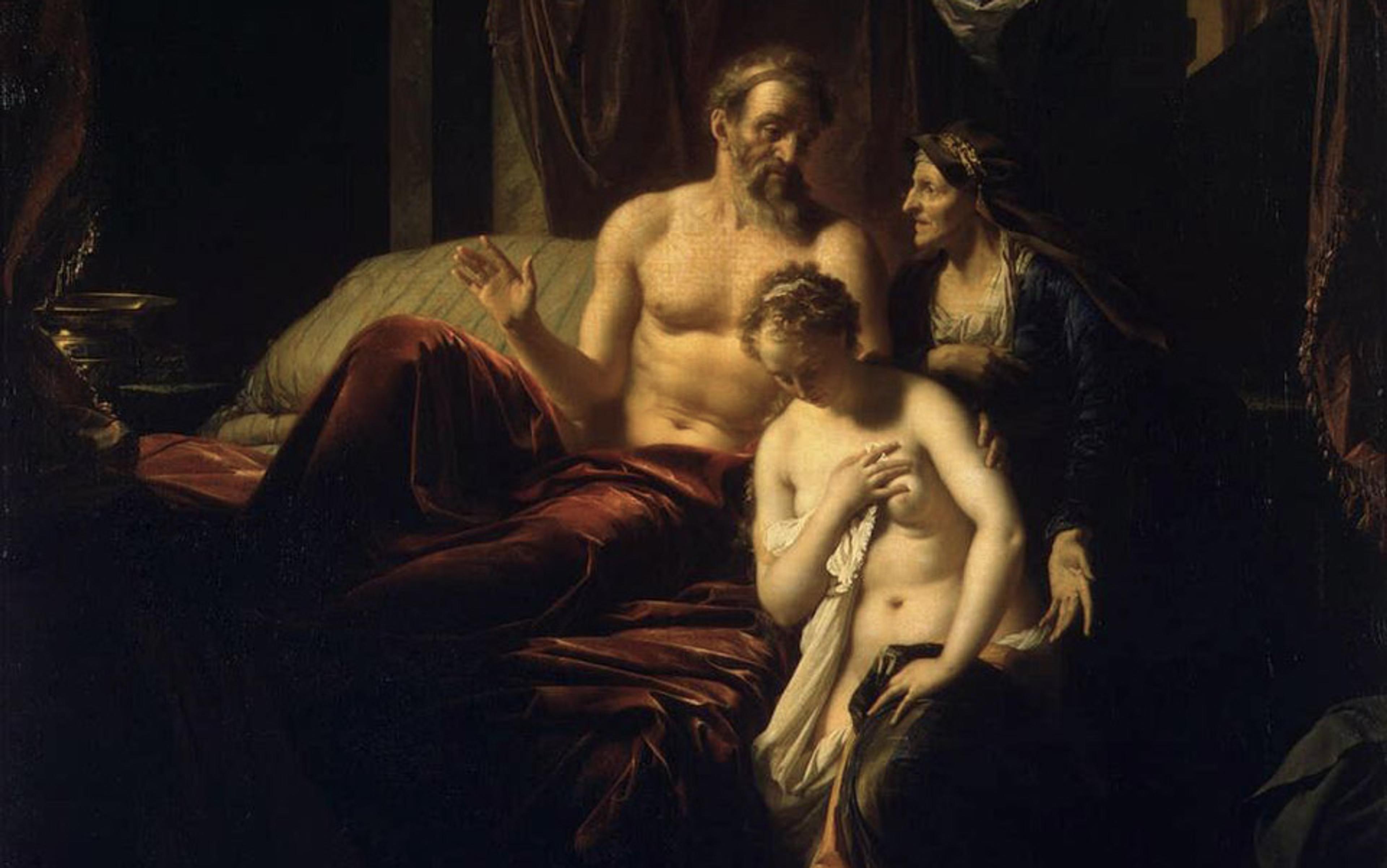It’s hard to shake off the image of them staring into space. On benches and dried-out grass in south Tel Aviv’s Levinsky Park, small rows of men and women sit in wide-eyed silence. They are in shock. Many of them don’t offer details of their journey into Israel: ‘It was terrible,’ they say, and then stop. Refugees from mostly South Sudan, Eritrea, Sudan and also the Ivory Coast and the Congo, they entered the country through the Sinai Desert’s border with Egypt. ‘There were bad things, very bad things,’ one South Sudanese woman ventures, looking at her solemn seven-year-old daughter: they crossed the border a few years ago, and the girl barely spoke for months afterward.
Refugee organisations report that if people do speak of the journey, it is of unspeakable things: beatings, torture, rape, extortion, and imprisonment. A recent Human Rights Watch report catalogues nightmare cruelties at the hands of human traffickers in the Sinai. One practice is to beat migrants while playing their screams to relatives back home, for money.
When refugees from sub-Saharan Africa survive the trip to Israel, and the trauma that goes with it, they might end up functioning, working in menial jobs and living in overcrowded slums. That they put up with this semi-existence after the tortures of getting to the country tells us only that there is no alternative.
Israel, of course, is not unusual in being panicky over migrants, especially dark-skinned migrants from the ‘developing world’. But when Jews from all over the world migrate to Israel, it is given a Hebrew term, aliyah, or ‘ascent’, to make clear that this relocation is not really immigration but rather a welcomed homecoming. In a nation numbering almost 8 million, there are some 1.6 million Palestinian citizens, who stayed in Israel after the 1948 war that created the nation. Four per cent of the population is ‘other’. Meanwhile, the collapse of the Soviet Bloc in the early 1990s brought close to a million Russian Jews to Israel, though non-Russian Israelis sometimes moan that many of these are not ‘really’ Jewish. However, they are Jewish enough for official Israel, which is obsessively preoccupied with what is viewed as the existential imperative of boosting Jewish demographics.
Some have wondered how Israel — a nation of desperate, traumatised refugees — could be so unfeeling and closed to another set of desperate, traumatised refugees
Many Israelis, now sharing space with some 60,000 refugees from the sub-Saharan region, are making their reluctance known, with hate graffiti, verbal abuse, and demonstrations calling for the eviction of African refugees from the Jewish state. The migrants have been coming since 2005. Given no status, no rights, no work permits, they have crowded into run-down parts of Tel Aviv. In May this year, there were pogrom-style attacks against African migrants, smashed windows and burned buildings — the hate on the street stoked by equally hateful words from government ministers. Miri Regev, of the right-wing Likud party, for example, described the refugees as ‘a cancer in the body’ of the nation.
Rami Gudovitch, an Israeli activist who works with the refugees in south Tel Aviv, has described what he sees as ‘open, explicit and humiliating racism’. The attacks on refugee populations, he said, are ‘physical, verbal, brutal, serious, and endless’. What’s more, he is attacked, too, for siding with the migrants and speaking out about their plight. Watching from further afield, some have wondered how Israel — a nation of desperate, traumatised refugees — could be so unfeeling and closed to another set of desperate, traumatised refugees. But that’s the wrong question. That isn’t how it works.
In creating a Jewish homeland, Israel’s founders sought both a refuge from and an erasure of the brutal history of Jewish persecution in Europe. They wanted to do away with any idea of a scraping, craven, Diaspora Jew and replace it with a strong, confident, ‘new Jew’ belonging to this new nation. Alongside that, of course, was another erasure: of the people already on the land earmarked for the Jewish state — an air-brushing instantly surmised in the early Zionist slogan for Mandate Palestine: ‘A land without a people, for a people without a land.’
Zionism was always a bit obsessed with hygiene, mirroring the way that Europeans — colonisers and settlers of that time — were finicky and aloof about the supposedly unwashed, disease-riddled developing world. Israeli writers such as Amos Oz have described, with dark humour, the germ-averse fretfulness of their forebears upon arrival to then-Palestine, a fear of the ‘dirty’ Orient. But there’s another purity drive in Israel — not to do with grime and infestation. Much of the country’s 64-year history has been a chronicle of its attachment to erasures: to wiping things clean and out of the way.
Israel amalgamated its concerns with these different strands of disappearance into the embedded logic of a frontier state, seen as perpetually clinging on for dear life in a region filled with hostility. In this scenario, purity is a component of survival: if the neighbours are deadly, then there must be clear lines of demarcation; the in-group and the out-group; the acceptable types, and the dangerous, unacceptable types. Israel is like a constantly monitored filing system, sifting carefully distinct categories. It is done in the name of security. There can be no mixing, no blurring; and there is, regrettably, no choice in the matter, or so the prevailing narrative goes, because the country’s very survival is at stake.
The treatment of African refugees in south Tel Aviv is a present and visceral testimony to this equation. But its wider logic has spawned a comprehensive system, a landscape of purity, fenced by borders and boundaries, that features colour-coded ID cards and car number plates; A-road highways and B-grade bypasses; staggered levels of residency and exclusion. It’s an elaborate, all-encompassing system, so entrenched that it is at once overwhelming and invisible: part of the national DNA — but barely a part of the conversation.
In Neve Sha’anan in south Tel Aviv, you can see the system at work in microcosm. Neve Sha’anan is a slummy district, a busy hub for buses, but also drugs and prostitution. It is home to poor Israelis, foreign workers from south-east Asia, and now, African migrants. It has a central pedestrian strip of shops and stalls, always packed, with what looks like an invisible force-field running through some of it: barbers’ shops playing Bob Marley music on one side, Jewish men playing backgammon on the other. Alongside the barbers’ offering complicated head etchings, the walkway is crowded with laundrettes, and assorted retail shops displaying ads, in English, for rooms to rent — never entire flats. There is chaotic, exposed wiring inside many stores, bars and beer halls up above, and lines of sun-bleached laundry hang overhead next to crumpled Israeli flags. The main street of Neve Sha’anan feels as though it has been set up to let jobless men and casual shift-workers while away the hours.
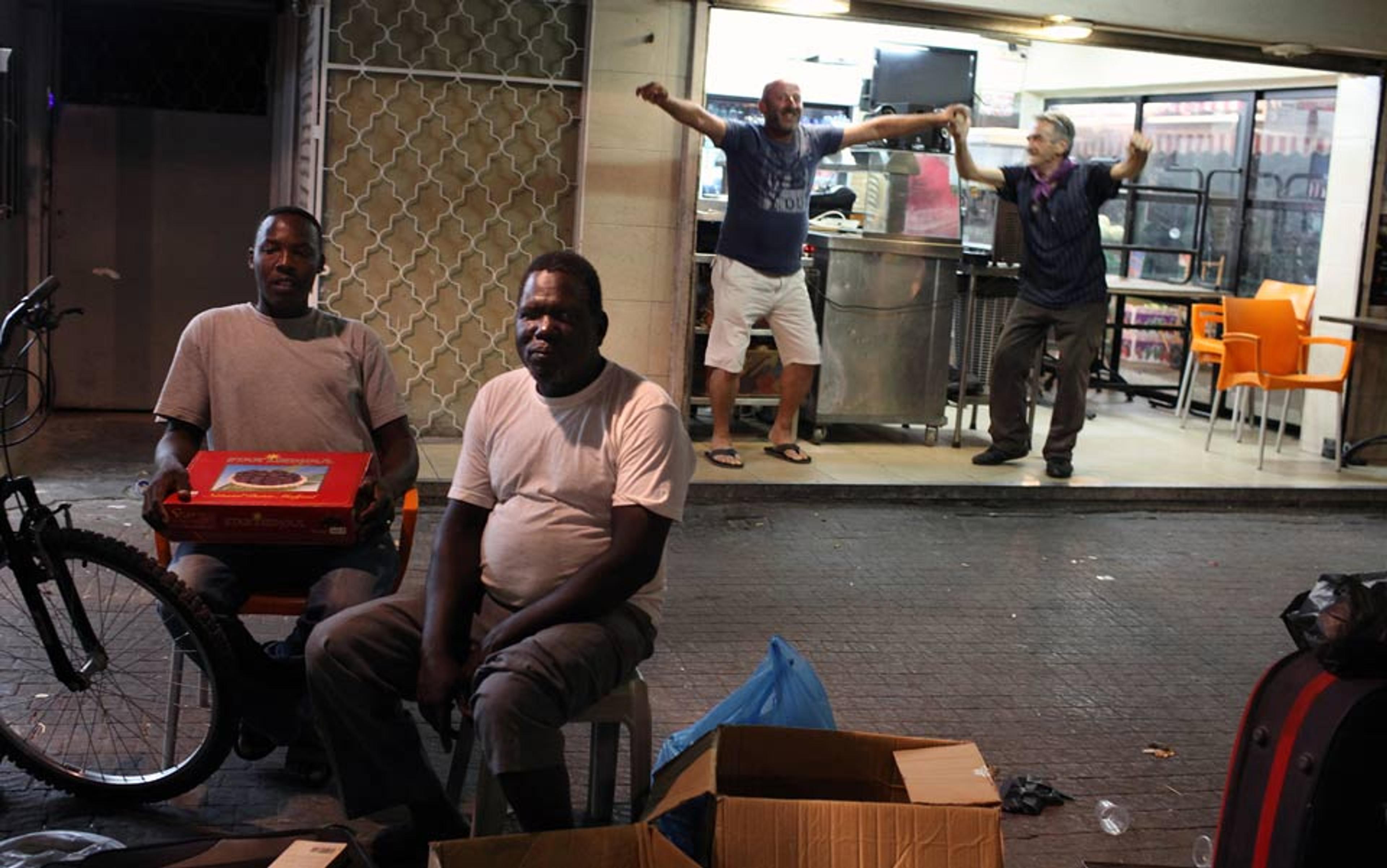
Separated by an invisible ‘force field’: Israeli and African traders keep themselves to themselves at Neve Sha’anan, in south Tel Aviv.
Ashraf, 28, from Darfur, works here, in a shop selling phone cards and computer gadgets. An artist and designer, he arrived in Israel three years ago. ‘Everyone still asks me, all the time, “Where are you from?”’ From here, he replies. But they say, “No. You are not Jewish.” They tell him that Israel is for Jews; ‘not for me, not blacks. On the streets, I hear it many times. Too many times.’
Before, the journeys of migrants from African countries used to stop in Egypt. But after Egyptian police killed 28 Sudanese asylum seekers on 30 December 2005 for demonstrating outside the UN refugee agency in Cairo, the migrants kept on going, into Israel. They probably relayed to others back home that things were OK here. And it probably was OK, relatively speaking. Gizma arrived from South Sudan in 2010, with a five-year-old daughter. She was given a visa to stay, but not to work — though she worked anyway, unofficially, as a housekeeper and later as a cleaner. Her daughter went to school, and Gizma put up with the low-paid, casual work and the high-grade, casual racism that went with it.
‘Really, no, it hasn’t been easy,’ she told me. ‘But maybe my daughter can have a life here, why not?’ The hostilities are frequent: abuse on buses, on the streets, and a landlady who keeps threatening eviction because she wants to rent only to Israelis. But it is not all bad. ‘Some people are very friendly, good people,’ said Gizma. ‘At my daughter’s school, her friends, their parents, and the teachers.’
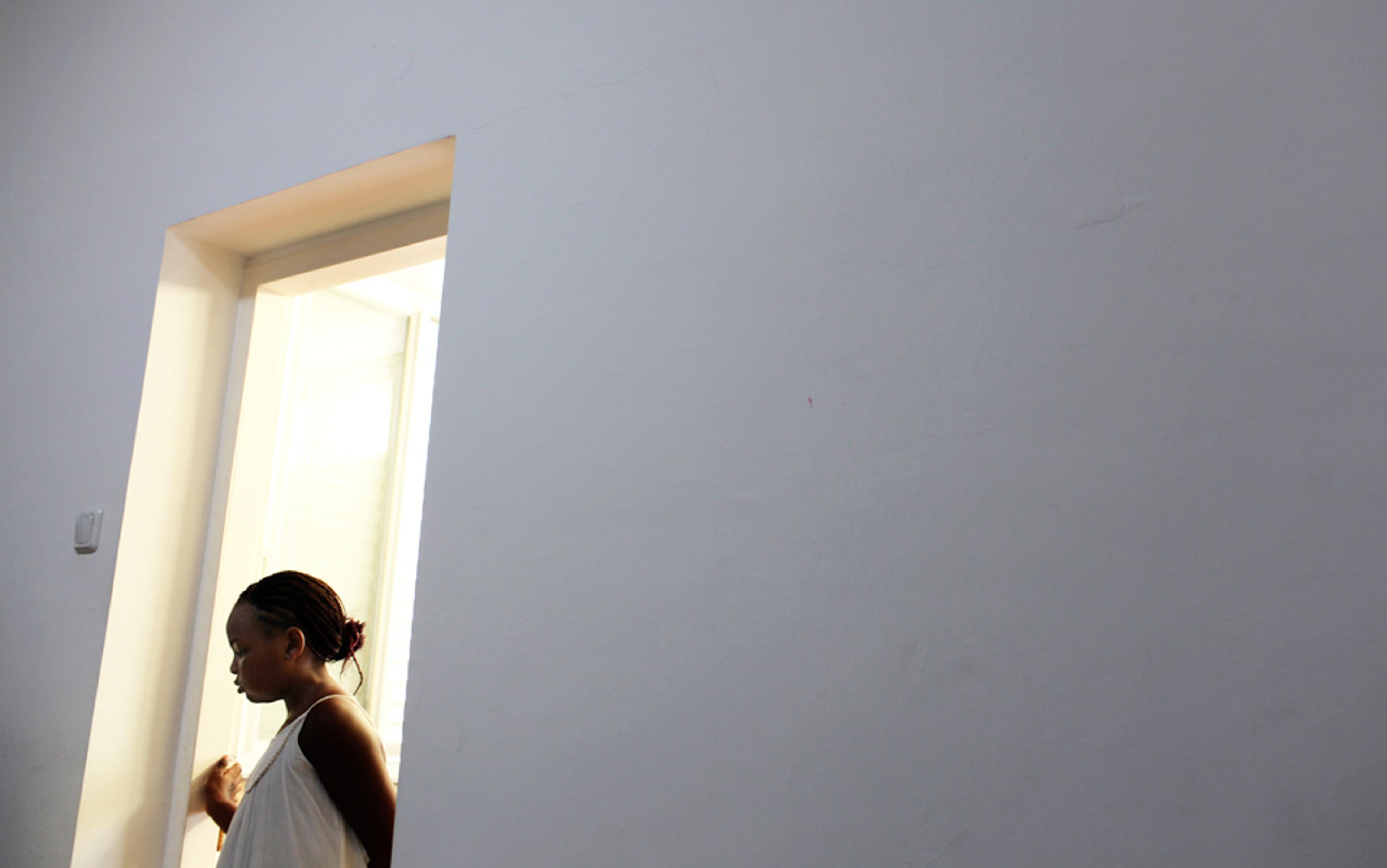
A picture of alienation: the 7 year-old daughter of Sudanese refugee Gizma barely spoke for months, traumatised by her journey into the country.
As more refugees arrived, Israel grew increasingly intolerant. In May this year, the hostility exploded on to the streets of south Tel Aviv, with anti-migrant demonstrations, lootings, and attacks. African migrants are labelled ‘infiltrators’, to remove any potential sympathy for refugees, and to hard-wire the association of a security threat — for Israelis are already conditioned to know all about Palestinian ‘infiltrators’ from the occupied West Bank. On top of that, Africans seeking asylum in Israel have been blamed for everything migrants are always blamed for: bringing crime, disease and too many babies; taking jobs, resources and women.
A few streets away in Shapira, still in south Tel Aviv, one man, perhaps in his 70s, gets riled by a question in which I used the word ‘refugee’ to describe the Africans now living in his neighbourhood. ‘Let them rape you, and then let’s hear you. What, are refugees allowed everything?’ he asked. It’s a common theme, this amalgam of racism, hateful sexism, and a panicky, proprietorial, purity-driven fear of mingling, and I heard it many times over.
Danny Aziz, who runs a falafel shop in the nearby Hatikva neighbourhood (site of May’s anti-African riots) told me: ‘What will happen if they all come to this tiny place? They’ll take over. You won’t survive it. They’re not Jewish — of course that’s the problem — there will be miscegenation, women are weak and can easily be persuaded.’ Herzl, a 60-year-old lorry driver sitting in the falafel shop with Danny, added: ‘This isn’t just hate for the sake of it — there is good reason, we are thinking of the future.’ How, he wanted to know, ‘will we stay Jewish if we intermarry?’ It’s a clear red line, even for those who consider themselves tolerant over migrants.
One man on the cusp of 40, who runs a grocery shop in Shapira, told me: ‘They’re fine, they show respect and they bring business.’ At the time, he happened to be serving one of ‘them’ who are fine, and who clearly understood Hebrew. ‘They shop here, no problem. But dating women? That’s another thing completely. That’s not OK. That’s not normal.’
In 1948, just as Israel declared itself a nation, the German-American political theorist Hannah Arendt became concerned about the potential for insularity and suspicion of outsiders on the part of the new Jewish state. Her essays, collected in The Jewish Writings (2007), set out these fears: why did early Zionism, strands of which considered the idea of a Jewish homeland within a bi-national state in Palestine, become subsumed by another strand, which dismissed this outright in favour of a single Jewish state? The Zionist organisation, Arendt wrote, was oblivious to the ‘obvious fact that the only permanent reality’ at that time was ‘the Arab presence in Palestine’. Without Arab-Jewish co-operation, Arendt thought the Jewish venture in Palestine was doomed to fail. With it, the new state would have ‘a model of how to counteract the dangerous tendencies of formerly oppressed people to shut themselves off from the rest of the world and develop nationalist superiority complexes of their own’.
Her warning about a people shutting themselves off is hauntingly, presciently echoed today in conversations with Israelis who don’t want to live alongside African refugees. ‘Send them home. Every nation has to take responsibility for itself, that’s how it works,’ said Alicia, a 44-year-old from Bolivia who migrated to Israel 13 years ago. She is not oblivious to their situation. ‘I know they have problems, but why should those problems be added to our account, for us to deal with? No. They have to go home.’ It’s true that Alicia wasn’t born in Israel. ‘But it’s my country now, I’m a citizen.’ That’s the thing about ethnic tribes: even relative newcomers grow conditioned to think that someone from another tribe is someone else’s problem.
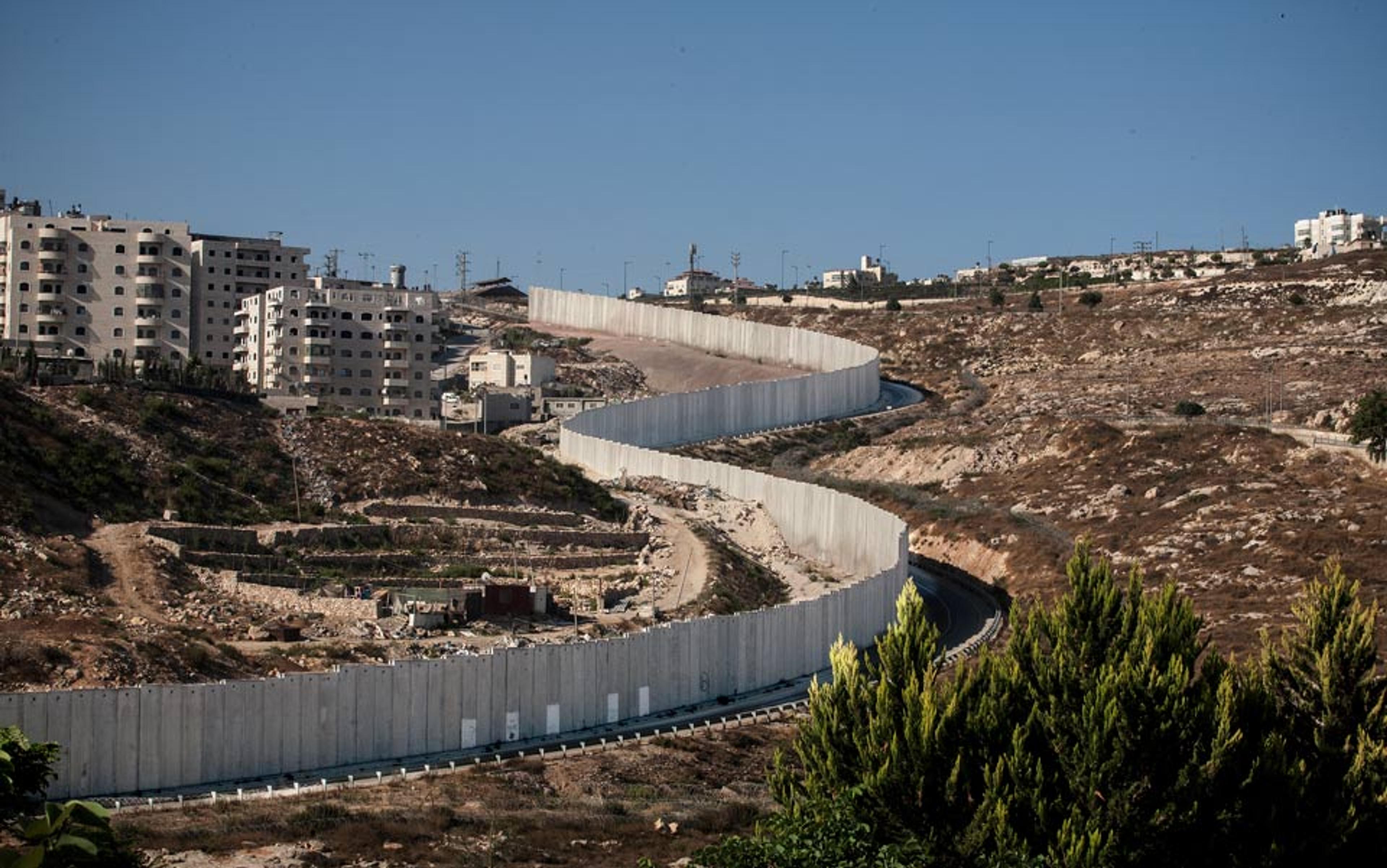
Like talking to the wall: Israel’s separation barrier snakes around the occupied West Bank, picking up Israeli settlements while leaving out Palestinian villages.
But there is starker and more visible shutting off. The Israeli government is building a steel fence along the 266 km Sinai border to stem the entry of further refugees, and it has completed a giant detention centre in the southern desert to contain those already in the country. Israel has also decided that South Sudan is ‘safe enough’, and has started to send refugees back there. Rami Gudovitch, the Israeli activist tarred with the brush of misplaced ethnic sympathies, thumbed through pictures on his phone with me, of African migrants whom he befriended and tried to help. ‘This one has gone,’ he said. ‘This one, too, deported.’ He scrolled to a photo of a young woman. ‘We managed to send her to boarding school, so she’s protected. But these two were deported… and this kid spent nearly a month in prison.’ Some of his South Sudanese friends who were sent back have since died, of malaria.
If there are ever-widening categories of those rejected or ejected, accepted with caveats, contained or confined, then it makes sense that there are filing systems for the in-group, too, settlers included.
As a Jewish self-determination project in Palestine, Zionism invoked the sort of mythology that frontier states often use in their genesis: a pure, ideological dedication; a love for the land; a greening of the desert; magically carving cities out of swampland, out of blood and sweat and determination. These are the values and achievements of Israel’s ‘pioneers’, known to every schoolchild.
Settler states such as America, Australia, or South Africa have common features, common founding myths. There’s always a first, founding-fathers ethnic group — Anglo-Americans or Dutch Germans or, in Israel’s case, European Jews. There is always an indigenous ‘native’ group (considered inferior), and then there’s a third group of subsequent, international migrants (not as good as the founders, but much better than the natives). In Israel, many of those later migrants were Jews from the Middle East, who were disproportionately sent to undeveloped regions on the nation’s ‘periphery’ and who, as a result, remained inevitably weaker in terms of access to power and resources. In this context, post-colonial architects and political geographers see planning as the ‘executive arm of the State’ — a description used by Hubert Law-Yone and Rachel Kallus in their essay ‘The dynamics of ethnic segregation in Israel’ from The Power of Planning (2001), edited by Oren Yiftachel et al.
Of course, neither Israel nor international law regards as settlers those living within Israel’s internationally recognised borders. The settlements that invoke global condemnation began forming in 1967, when Israel, following a war with neighbouring Egypt, Syria and Jordan, occupied the Palestinian West Bank, Gaza and East Jerusalem. Today, there are well over half a million Jewish settlers — and they can be graded: the hardcore, violent fanatics who live on hilltops and terrorise Palestinians; the non-violent but similarly cultish, shiny-eyed ‘national-religious’ settlers; the ultra-Orthodox communities who aren’t seeking to settle Biblical land but can’t afford to live in Israel proper; and other non-religious ‘economic settlers’ enticed into settlement homes by massively subsidised housing and a better quality of life. Economic settlers are the majority, but all settlers are deemed illegal under international law. They live on Palestinian land with Israel’s blessing, planning and protection; and they are Israel’s largest national project, siphoning funds, energy, people and resources.
‘Numbers, checkpoints, permits, crossings, checks — this is how our lives are governed. It doesn’t matter if we earn a million dollars here, we’d never have peace’
Settlers are also a feature of Jerusalem, where a visibly politicised, engineered landscaping is very clear: the west of the city is exclusively Jewish, emptied of Palestinians in the aftermath of the 1948 war. The east of the city (annexed in 1967 and not recognised under international law) is Palestinian, but is nonetheless part of what Israel sees as its ‘eternal, undivided’ capital. Increasingly, it is populated with expanding Jewish settlements: around 300,000 Jewish Israelis now live in East Jerusalem. And then there’s another expansion, a steady drift into another people’s land beyond the boundaries of Jerusalem, and into the occupied West Bank — another engineered landscape that draws the dominant group into the illusion of ownership, while at the same time entrapping the occupied group in a strange, twilight snare of control.
‘I am number six,’ said Mostafa Shawish, 54, a Palestinian father of four. His friend doesn’t want to be named, but he has a number, too: ‘I am nine,’ he said. ‘There are 38 numbers, but they are per household, not per person — otherwise it would be too many for the Israelis to check,’ he said, breaking into a laugh at this patently absurd reality. Israel gave them those numbers to mark them as belonging to that particular village.
These men, living around 10 km to the north-west of Jerusalem, are in the surreal situation of having a Jewish settlement, Givat Ze’ev, build itself around their small, West Bank village — and envelop them. ‘They started building in 1981,’ said Mostafa. ‘Actually, we joined in, we helped them build. And nobody told them to stop, so they carried on building,’ he said, gazing across the reaches of this expanding settlement.
Earlier, I spoke with a Palestinian builder working on a cluster of new houses on a residential edge of Givat Ze’ev that curves around a pretty, undulating plain. Palestinians often end up working, through cruel necessity, on the construction of settlement homes, on land that has been confiscated from them. This particular builder, who won’t give his name, points into the distance at the fence that marks the boundary of Givat Ze’ev, pushed right up to the edges of several Palestinian villages beyond: al-Jib, Bir Nabala, Beit Surik, Biddu, and Betunia. All that land has been claimed for Givat Ze’ev’s expansion, which is ‘like a cancer’, said the builder, invoking the same metaphor of uncontrolled growth favoured by Israeli politician Miri Regev. ‘It gets into the whole body, pushes into every corner. Soon Givat Ze’ev will fill all this land.’ He gazes out at the rolling mountain, hushed, beautiful, and at some future point to be punctured by the loud clacking of bulldozers and the marching logic of an occupying state.
Palestinians from some of those villages in the distance used to pass through Haret al Khalayla, where Mostafa and ‘number nine’ and around 600 other Palestinians live, en route to Jerusalem or elsewhere. But now those villages are trapped in the West Bank by Israel’s separation barrier, 80 per cent of which winds into the occupied territories, picking up Jewish settlements, but shutting out Palestinian villages. Except for a few, like Haret al Khalayla — stuck in a no-man’s-land. It makes life difficult for Mostafa, cut off from his fellow Palestinians: ‘We can only use the one checkpoint going to the West Bank, in and out,’ he told me.
Checkpoints started appearing during the first Palestinian uprising of 1987, another layer of control, simultaneously filtering (for security) and punishing Palestinians with a complicated, ever-changing system of papers and permits. Checkpoints mushroomed during the second intifada, and they now take various forms — roadblocks, temporary checkpoints, flying checkpoints, permanent barriers, steel gates, permanently or partly patrolled by Israeli soldiers.
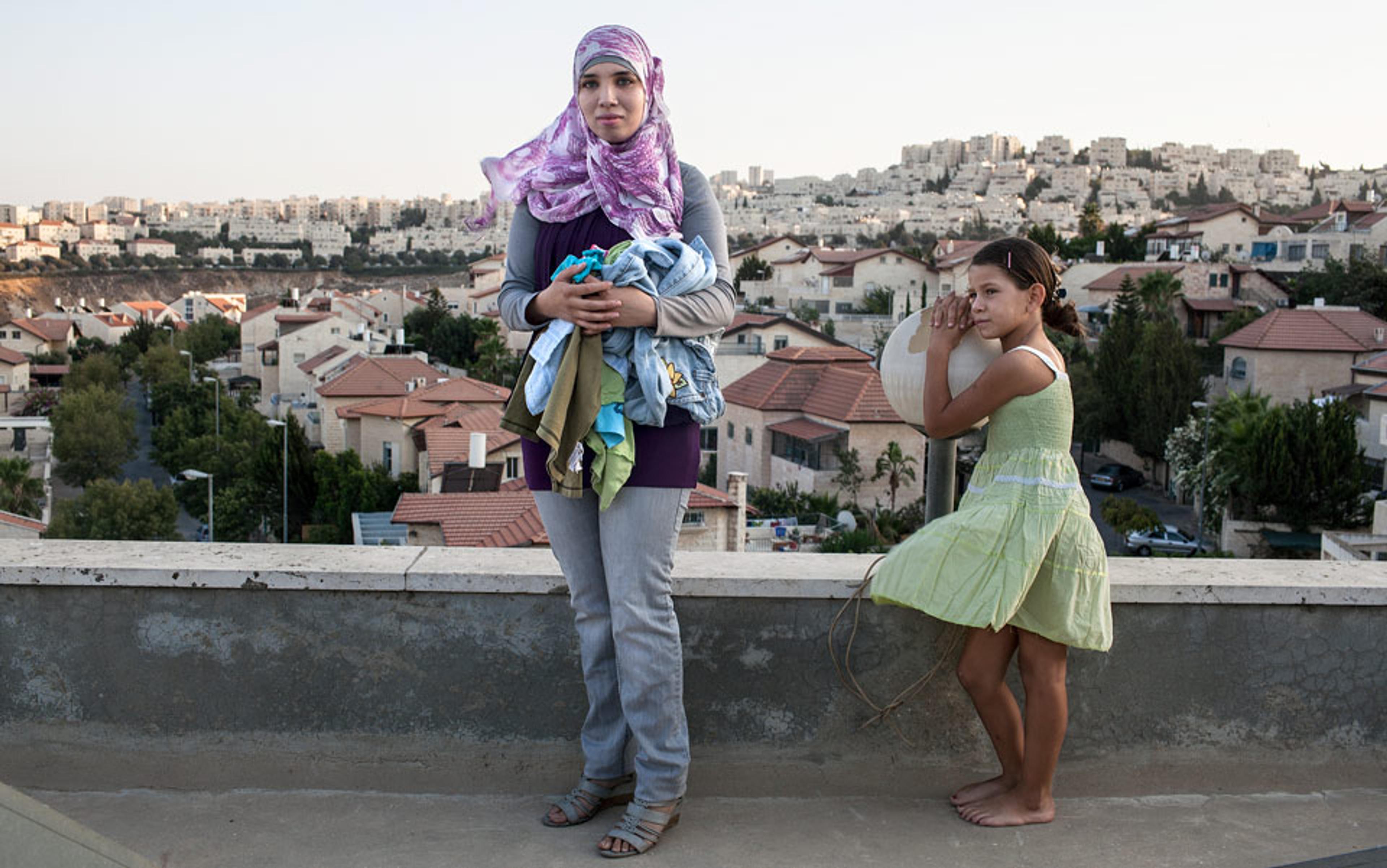
Enveloped: A Palestinian family in East Jerusalem is surrounded by the ever-expanding Jewish settlement Pisgat Ze’ev.
Palestinians cannot use the route leading from Givat Ze’ev directly to Jerusalem without special permits, though one checkpoint along that route was dismantled a few years ago. Mostafa counted the number of checkpoints circling their home. ‘Five,’ he said. ‘Numbers, checkpoints, permits, crossings, checks — this is how our lives are governed. It doesn’t matter if we earn a million dollars here, we’d never have peace of mind.’
From certain entry points, Givat Ze’ev looks like it could easily be a suburb of Jerusalem. Some 10,000 Jewish Israelis live here, along leafy, winding streets. They’re drawn to the area by the considerably subsidised housing, the neighbourly vibe and the easy access to work and other attractions in the Holy City. ‘I feel free,’ one resident, Pini, 58, said. ‘The houses are great, it’s a community neighbourhood, the prices are reasonable, there is no feeling of checkpoints. It’s like being in Jerusalem, and it will be like that in the end, properly connected.’ By design, Palestinians and their villages are mostly hidden from view.
‘Nobody goes to the [Palestinian] villages, no,’ said one 60-year-old woman who moved to this settlement from Jerusalem 30 years ago. ‘There’s a petrol station at the entrance to one, and a car tyre repair centre that some people from here go to. [The Palestinians] profit from this situation. But we don’t go into the villages, nobody wants to. We just know that’s the line, that’s where it ends. It’s almost like there is a checkpoint there.’ There actually is a checkpoint right there — for Palestinians permitted to work in the ‘Israel’ that is Givat Ze’ev. But perhaps you don’t see the obstacles if they don’t apply to you. ‘And there are Arabs everywhere in this community,’ the woman added: ‘they are cleaners, supermarket workers, builders, and delivery men.’ Is this meant as a sign of inclusion, for which Palestinians should be grateful? After all, as Pini explained earlier, this is not ‘a place of hard settlers. You won’t see any fanatics here.’
‘I hear it all the time, that Arabs are “you others” and are not abiding by the “rules” of the area. It’s this mentality of the Jewish and the Goys’
Fanaticism is deemed to live deeper in the West Bank, where hard-line, ideological, often violent, Jewish settlers squat on Palestinian hilltops. Similarly fanatic settlers in Palestinian neighbourhoods such as Silwan and Sheikh Jarrah in East Jerusalem throw Palestinian families out on to the streets, while waving disputed land documents that the Israelis courts have chosen to uphold. When Israelis demonstrate against such evictions alongside Palestinians, they are labelled a mad, lefty minority. There are other areas, that Israel calls ‘Jewish neighbourhoods’ — settlements, but populated with Israelis, who, like those in Givat Ze’ev, are more concerned with house prices and living standards than the ‘Land is ours!’ ideology of the ‘real’ West Bank settlers. Some of them have partition walls; some of them have shopping malls visited by Palestinians and Jews alike. Yet underlining everything is a clearly understood system that keeps Palestinians from neighbouring areas out — and if they are ‘in’, then there are rules to follow.
Construction of the separation barrier — sometimes an ugly concrete wall, mostly an electric and barbed-wire fence, and always decked with security cameras, watchtowers, dirt roads and trenches — began in 2002. It was Israel’s reaction to the second intifada that broke out in 2000, a bloody period of deadly Israeli incursions into the Palestinian West Bank and Gaza, and deadly Palestinian suicide attacks inside Israel. By the end of the intifada, some four years later, 3,223 Palestinians and 949 Israelis had been killed, according to Israeli human rights group B’tselem. Plans to build a wall had surfaced prior to the intifada, in the run-up to the 1999 Israeli elections, when Ehud Barak, the current defence minister, explained the barrier logic thus: ‘We are here and they are there.’ The ever-present urge to keep the sides apart was turned into a catchy campaign slogan.
The barrier’s entire route is around 709 km (more than twice the length of the Green Line between Israel and its neighbours) and cuts into the West Bank, for much of its path, taking in settlements and Palestinian land, but leaving out Palestinian people wherever possible. Crucially, it cuts off Palestinian East Jerusalem from the bits Israel thinks should remain in the West bank, and it does so arbitrarily, sometimes in the middle of a street. The upheaval, the random checkpoints, and the traffic snarl-ups caused by erecting this new wall ruptured routines such as getting to work or school on time. It also ruptured a population, physically severing a people from each other.
‘One day, we were stuck in a long traffic jam on the way home,’ says Iyad Habib Allah, 40, whose family home in al-Ram, on the outside edge of East Jerusalem, was built by his father. ‘That was the wall starting, while we were out. Our whole lives changed completely in one afternoon on the way home from shopping.’ Iyad, his wife and three sons had to move, but they couldn’t buy or build in East Jerusalem: convoluted rules over ownership, mortgages and land registration thwarted all of that. The Israeli state manages more than 90 per cent of the land — an unusually high figure.
Iyad’s family started looking for a new home in Jewish parts of East Jerusalem. They found a flat in Pisgat Ze’ev, but when it came to finalising an agreement, the owner said: ‘What sort of name is Habib Allah?’ Iyad told her and she said that she, of course, had no problem with that, but she didn’t want to get into trouble with her neighbours. The family ended up in French Hill, closer to the Old City. Yet the neighbours there weren’t exactly thrilled, either. ‘They’d say: “I’m happy that you came to this kind of neighbourhood, but you have to abide by its codes”,’ says Iyad. ‘These are left-wing Israelis, and still. I hear it all the time, that Arabs are “you others” and are not abiding by the “rules” of the area. It’s this mentality of the Jewish and the Goys.’
This constant preaching of the terms and conditions of their allowed existence, on land that has been taken from them has its price. ‘You know what you lost,’ says Iyad. ‘And you know that other people in other places have a sense of freedom, of being able to go or do what they want to do.’ Instead, Iyad says, they live ‘with a feeling of being pursued, a feeling of unease, because the fact that you are Palestinian could cause you trouble, for no other reason than that you are Palestinian’. The sympathy of Israeli friends only goes so far. ‘They tell me to just say thanks that you’re living in a democratic, moral state — and look what’s happening to your brothers in Syria and Gaza. I think it is beyond rude.’
Actually, nobody needs to speak of these limited entitlements. It’s all fully codified and understood, imprinted into the very cityscape; the zoned, fenced-off, white Jewish neighbourhoods, and the neglected Palestinian streets, all of it constantly re-articulating and cementing Jewish Israeli privilege and territorial claim.
According to Oren Yiftachel, professor of political geography at Ben-Gurion University, Israel — along with Sri Lanka, Latvia, Estonia, Serbia and Apartheid South Africa — is an ‘ethnocracy’, a nation in which ethnicity rather than citizenship is the criteria by which power and resources are allocated. One result of living in an ethnocracy is that Palestinians inside Israel — ‘Palestinian-Israelis’, ‘Arab-Israelis’, ‘48 Palestinians’ or ‘Palestinian citizens of Israel’, each label giving a different accent and a different political weight to their status — are subject to what Yiftachel describes as a planning logic of ‘internal frontiers’. The state, he explains, ‘manipulates the local geography to further the interests of a dominant ethnic group.’
The only exception to this skewed topography, the only place where Palestinians and Israelis actually live alongside each other, is in ‘mixed cities’ such as Haifa, Acre, Jaffa, or Ramle. But Haim Yacobi, an architect and planner, as well as a lecturer in politics and government at Ben-Gurion University, thinks the term ‘mixed city’ is a misnomer. ‘Mixed city suggests social integration,’ he wrote in The Jewish-Arab City (2009), which examines the way spatial politics get played out in Israel. Yet, he added, ‘a clear spatial and mental division exists between Arabs and Jews in Israel… hence the occurrence of “mixed” spaces is both exceptional and involuntary.’ He noted that ‘“Mixed cities” raise images of mutual membership, while ignoring questions of power, control and resistance.’
‘The Arabs here are different — you don’t know the Arabs from the Jews. Here, it’s mixed. In Jerusalem, it’s all separation. It feels like a zoo’
Officially, Haifa has a Palestinian population of about 10 per cent, though unofficially it is more like double that. Arabic is openly heard on the streets, much more so than in any other Jewish-majority part of Israel, and the city is palpably more relaxed about ethnicity. To look at the street-level ease in Haifa’s bars and on its beaches, shared by Palestinians and Israelis, you could be seduced into believing that this is an exemplary co-existence, which is how Israel officially sells the city.
‘Haifa is a model, it’s a type of miracle,’ said Daniela, new to the city, who runs a hairdressing salon with her friend Lubna in the centre. ‘The Arabs here are different — you don’t know the Arabs from the Jews. Here, it’s mixed. In Jerusalem, it’s all separation. It feels like a zoo.’
Daniela, 41, is from the Czech Republic, but converted to Judaism and moved, decades ago — first to a kibbutz and then to Jerusalem, where she met and married her husband, a Christian Arab. She and 36-year-old Lubna were neighbours in Az Zawiya, in East Jerusalem, and now jointly run this Haifa salon, which welcomes visitors in Hebrew and Arabic. Its shop-window dummy heads feature hijabs as well as hairstyles.
The two women, both mothers, moved here to get away from the relentless, separatist tension in the Holy City. ‘If I speak Arabic on a bus in Jerusalem, they look at me with suspicion,’ said Daniela. ‘That’s why we came here, to get out of that tension. It’s quieter, no one looks at the other, they don’t look at your religion — it doesn’t play the big role it does in Jerusalem.’
Except, often, it does, Lubna interjected, recalling her attempts to officially register her move. ‘Of course, I felt this discrimination at the interior ministry,’ she said. ‘They didn’t help me at all! They kept asking, “But why have you moved here? What have you come here to do?” And they wanted so many papers, documents.’
What do Palestinians from Haifa think the term ‘mixed city’ means? ‘It just means that there are Arabs living here. But most places are not mixed at all,’ said Nadim Nashif, director of Baladna, an Arab youth forum focused on education and identity issues. ‘Segregation is more sophisticated in Haifa, there are two parallel systems. Why? Because this is not a normal, healthy relationship.’
Sofi Shahwan-Dalal, 40, an art therapist, told me: ‘It’s the existence of one person next to the other, but there is nothing between them, nothing shared.’ Sofi and her family live in the Carmel district, along Haifa’s mountain ridge, in what is now a majority Jewish building. At first, her kids played with the other neighbourhood kids, ‘but they got into clashes very quickly’. One of Sofi’s neighbours told her son that Arabs are whores. Soon after, he wanted to wear the T-shirt he got in Jerusalem, the one with the slogan ‘Free Palestine’.
Sofi said that on Israeli Independence Day she tried to explain to one neighbour why she didn’t like the Israeli flags waving outside the communal entrance to the building. But he ignored her, told the other neighbours that she was an extremist, and now he has a flag up on his balcony all year long. ‘This started as an Arab neighbourhood and then it became Jewish, but we have to adjust to their terms. It is one way. I know everything about them, I learn Hebrew, the bible, everything, because it is imposed on me.’ Sofi broke off as a Jewish Israeli woman and toddler passed by the café we were sitting in, the mother chatting to the girl — her sing-song Hebrew easy and confident. ‘They don’t know anything about me,’ said Sofi. And they don’t want to know.’
Jewish residents of Haifa paint a very different picture. ‘It is co-existence, that’s why we like it. Arabs and Jews get along well, and there is equality,’ said Nissim, 65, who runs a photo shop in Hadar with his wife, Ahuva. ‘The municipality is left-wing and does things for the benefit of Arabs. When Arabs and Jews meet, we laugh and smile and aren’t enemies.’ This is reiterated by Ahuva, in the context of good business practice. ‘We’re friendly to everyone,’ she said. ‘We can’t say we won’t work with a specific race, it’s not possible, or desirable.’ The store specialises in wedding photography. ‘Everyone comes to us,’ Ahuva told me. She means everyone who has Jewish weddings: ‘Arabs have their own system.’
‘Eighty per cent of this neighbourhood is already destroyed, this is what Israelis are doing to us too, trying to erase our memories, gradually’
Every year Haifa holds a municipal celebration of the three faith festivals that fall in the same month — Christmas, Hanukkah, and Eid al-Adha. Nissim at the photo shop thinks the Festival of Festivals is a positive illustration of harmonious ‘meetings between Jews, Arabs, and Christians’. But when Palestinian PhD student Raneen Jeries mentioned the festival, she rolled her eyes. ‘Oh my God, it’s so embarrassing!’ she said. ‘Imagine: it’s Israeli Jews coming to this festival and playing and eating food with the Arabs and look, guys, this is co-existence. Give us a break!’ The festival takes place in Wadi Nisnas, an Arab neighbourhood that visibly lacks municipal attention — to roads, street lighting, refuse collection, development. ‘The Israelis come to this neighbourhood, but they don’t see any of this. And nobody cares.’
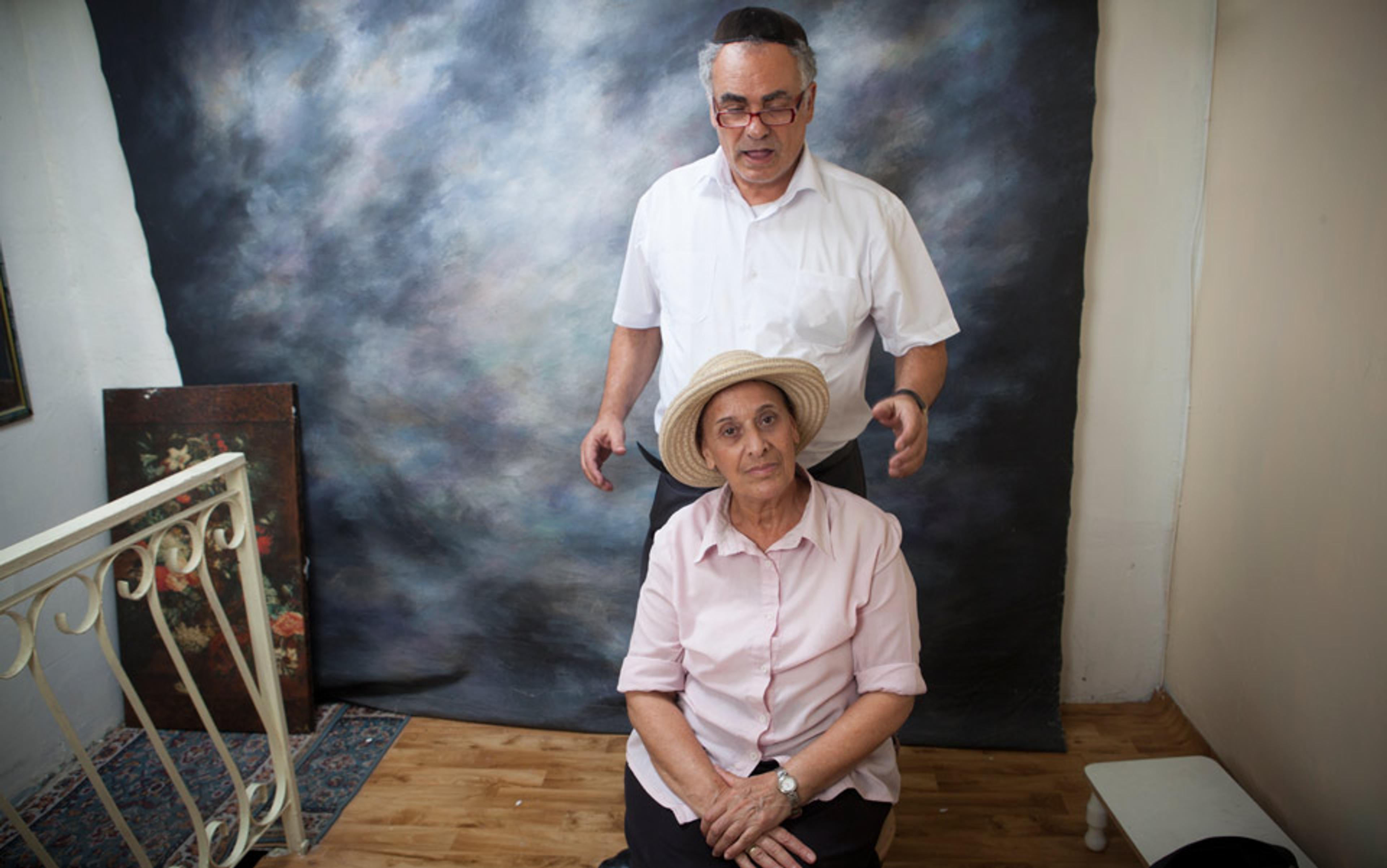
An illusion of co-existence: Nissim and Ahuva run a photography studio in Haifa, Israel’s foremost ‘mixed city’. They say Israelis and Arabs get on just fine.
What would co-existence actually mean for Raneen? ‘Jewish Israelis need to open their eyes,’ she said. She drove through Haifa to a slope descending to the old port and beach — to the neighbourhood of Wadi Salib, now entirely deserted. Only a fraction of its elaborate, old stone houses remain, alongside a grand stone stairway rising through the neighbourhood, embedded with perfect mosaic tiles peeping up through the weeds and plastic rubbish. Developed in the 18th century, Wadi Salib was emptied in 1948 as Palestinian families fled to the West Bank, or to Syria, Lebanon and Jordan. New Jewish migrants from the Middle East were immediately housed here, while Israel’s Absentee Property Law ensured that Palestinians were barred from returning to their homes — here or anywhere else in the new state.
In the 1950s, Middle Eastern Jews in Wadi Salib led huge demonstrations over the social discrimination they faced; in the grading system, they fared better than the Palestinians, but much worse than the European Jews. They moved out, and now Wadi Salib is a ghost town, incongruously empty. It ought to be a dream site for gentrification, but the old buildings are costly to renovate and the council is talking of tearing them down. ‘If you want to live in co-existence, you need to take responsibility for this, know the story of the place,’ said Raneen. ‘Eighty per cent of this neighbourhood is already destroyed, this is what Israelis are doing to us too, trying to erase our memories, gradually.’
It’s in places such as Wadi Salib that all the layering, grading and filtering is stripped back to its source — to the original expulsion of 725,000 Palestinians (naturally, a disputed figure) who fled or were forced out during the 1948 war that created Israel. Erased from Israeli history books but burned into Palestinian hearts, this is the purity that nobody can escape as long as it is ignored: the Palestinians denied return or recompense, the names of the 400-plus Palestinian villages removed from maps, the recent past that cannot be mentioned. This is where it all began, this drive for separation, destined to repeat and magnify itself in Israel, seemingly without end, without pause and without resolution.
An entrenched self-perpetuating narrative has taken hold in Israel, whereby everyone is against Israel and, even though the country is trying its best, it is surrounded by hostility. Because it turns out — and we could have guessed — being sealed off doesn’t make Israelis feel any safer; all it does is amplify suspicion and insecurity. All it does is provide the perfect breeding ground for hatred and intolerance and racism. It stunts thought, narrows horizons, and inhibits cultural and critical development by severing a crucial, life-giving, mind-expanding exposure to difference. Separation is a daily, crippling nightmare for the outsider group. Yet it is a disaster of a different sort for those who have chosen to close themselves off, inside a sterile zone.
